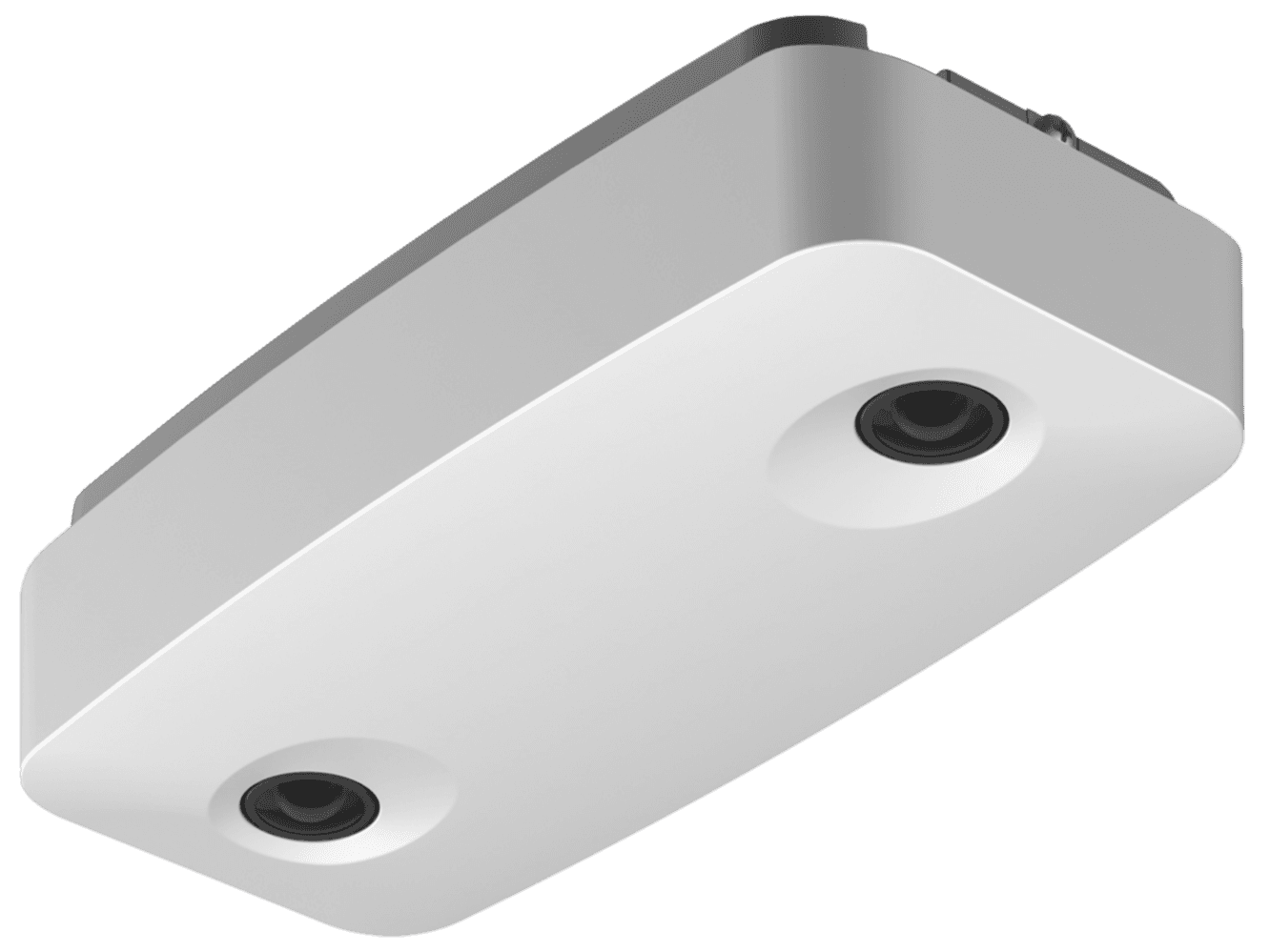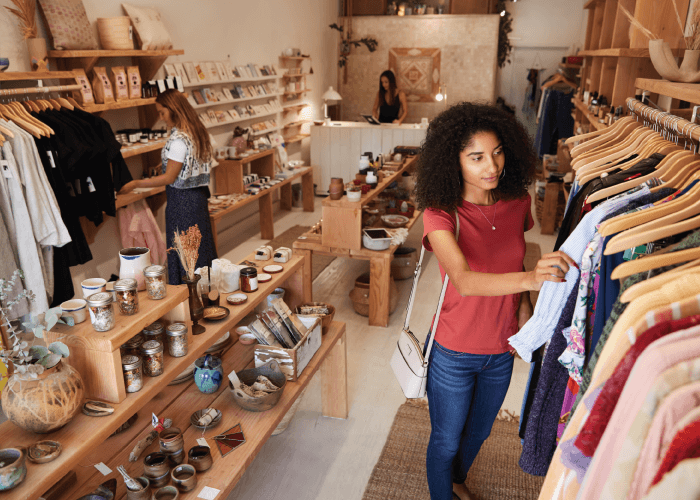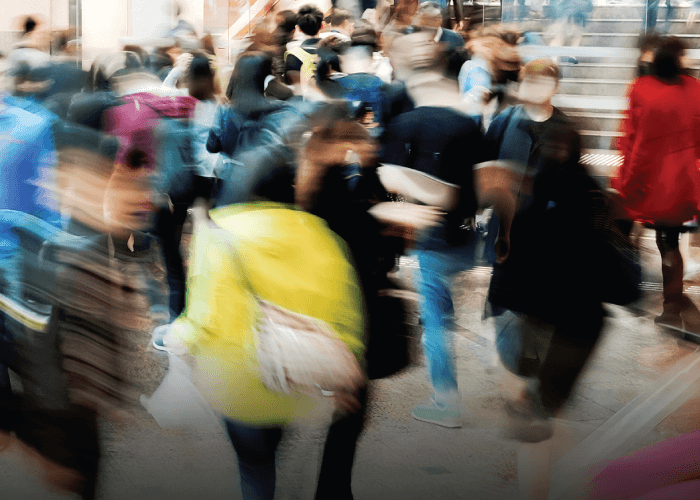How Accurate Is Your People Counter?

On this page
So you’re shopping around for a people counting solution for your brick-and-mortar stores. What factors are you most concerned about?
Are you due for an upgrade on your existing traffic sensors and hoping to save some costs?
Are you confident that your traffic solution is accurate and reliable?
Perhaps you’re looking for ways to optimize your business for the holiday shopping season and want to know what your options are?
Either way, retailers, direct-to-consumer brands and other venue operators must be sure that the system they are investing in is reliable enough to turn raw data into accurate and actionable insights. How, then, do physical locations sift through the noise to find a people counting solution that helps them solve the challenges of today’s business environment with the technology of the future? In our What You Need In A People Counter blog series, we’ll explore six questions that brick-and-mortar retailers must ask themselves before purchasing a traffic solution.
How Accurate Is The Solution?
Is The Solution Future-Proof?
Is The Solution Easy To Use?
Is It Trustworthy And Transparent?
Does It Have Global Capabilities?
Does It Comply With Privacy Regulations?
1. How Accurate Is The Solution?
Any people counting solution can provide you with in-and-out store traffic data. The difference lies in its accuracy levels. Let’s learn more about the evolution of people counting technology, how this has led to improvements in accuracy, how to evaluate accuracy levels and work through a checklist for you to ensure you have the most accurate solution on hand.
The Evolution Of People Counters
Technology for counting people walking into a store or other venues has been around for decades, each with its own limitations which impact the accuracy levels. Over the last few years though, there have been significant enhancements in the capabilities of people counting technology which have increased the accuracy of the sensors.
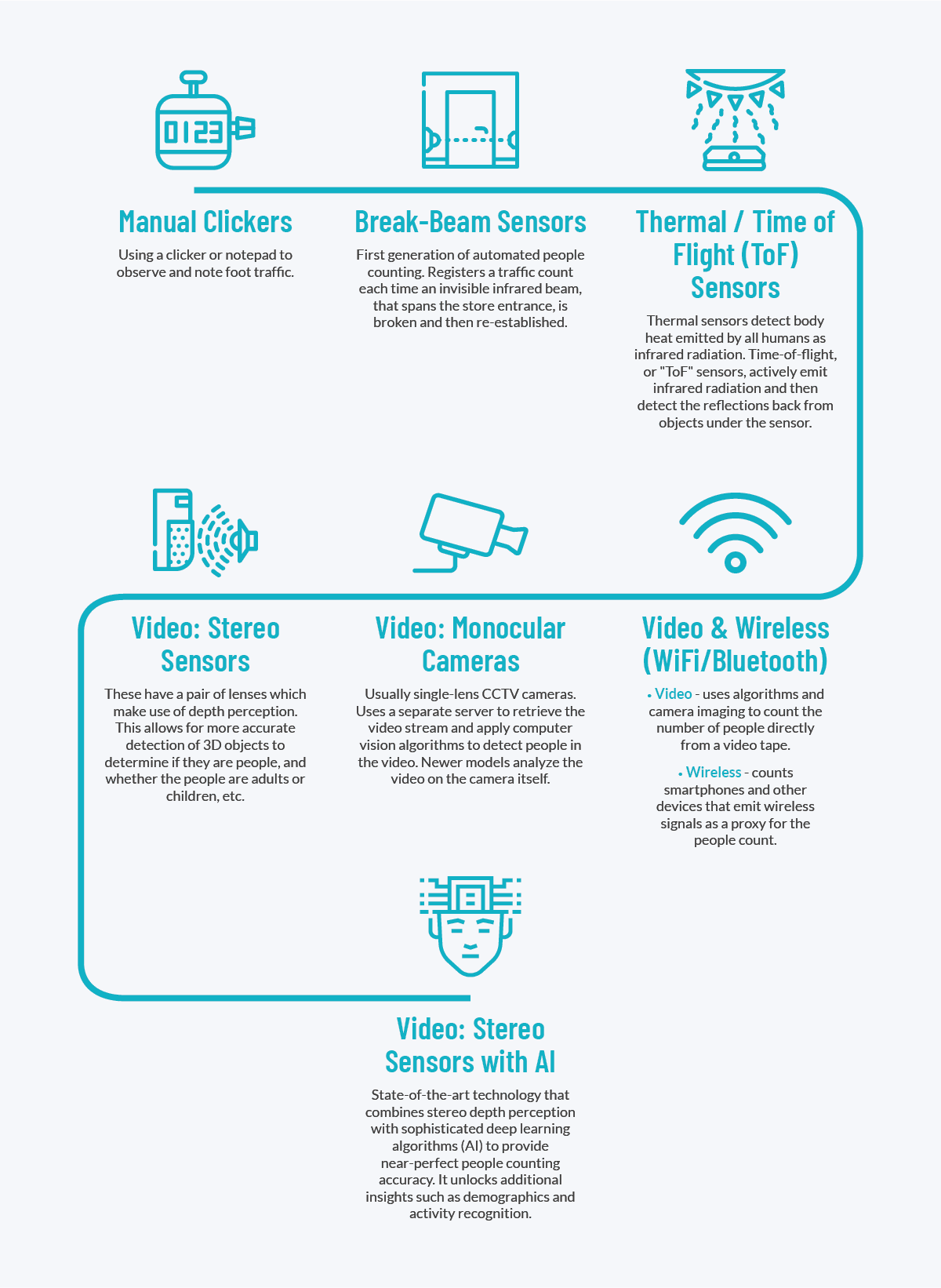
What Is The Most Accurate People Counter?
Ideally, your business is making financial decisions based on the real-time data collected from your stores. It is, therefore, essential that your people counter ensures the highest degree of accuracy, or you will never derive any real value and ROI from it. Take a look below at how the various people counters stack up in terms of accuracy.

Very Poor Accuracy
Manual Clickers
Missed counts when employees go on breaks, change shifts, get distracted, or perform other duties.
Susceptible to manipulation (e.g. purposely undercounting to improve conversion) especially since the counts are not auditable.
Poor Accuracy
Wireless
Both iOS and Android devices “randomize” MAC addresses, which means that each wireless “blip” from the same device will contain a different device identifier. This makes it impossible to know the true device count.
Smartphones generally emit wireless signals only every few minutes so someone could walk into a store and back out before you ever hear from their device, resulting in missed counts.
Since wireless signals can go through walls, devices outside the store or in adjacent stores can be miscounted as traffic into your store.
Break-Beam
People walking side-by-side, or a group of people walking close together, will be counted as one person.
A person or object standing in front of one of the beam sensors will completely disable counting until they move.
Good Accuracy
Monocular
Often counts objects that are not people, e.g. shadows, shopping carts, etc.
Often counts groups of people walking close together as one.
Thermal /ToF
Poor accuracy in warm environments.
Often counts groups of people walking close to each other as one.
Poor accuracy and/or coverage area when installed at higher ceiling heights.
Great Accuracy
Stereo
Good at counting only people, and not other moving objects, shadows, etc.
Accurately counts groups of people walking close to each other as separate individuals.
Can exclude children based on height.
Excellent Accuracy
Stereo and AI
Builds on the already high accuracy of a standard stereo sensor by adding in human-like visual perception to further eliminate any errors due to counting of human-shaped 3D objects, etc.
Deep learning algorithms also compensate for scenarios such as people sitting down, bowing, crouching, etc.
How To Evaluate Accuracy
Many people counting solutions claim to have an accuracy of 97, 98, and even 100%. But consider this - how ‘accurate’ are these accuracy levels? To start with, the accuracy percentage of a sensor is determined through an audit which involves manually capturing the actual metrics and comparing those values with the metrics that the system captured for the same time frame.
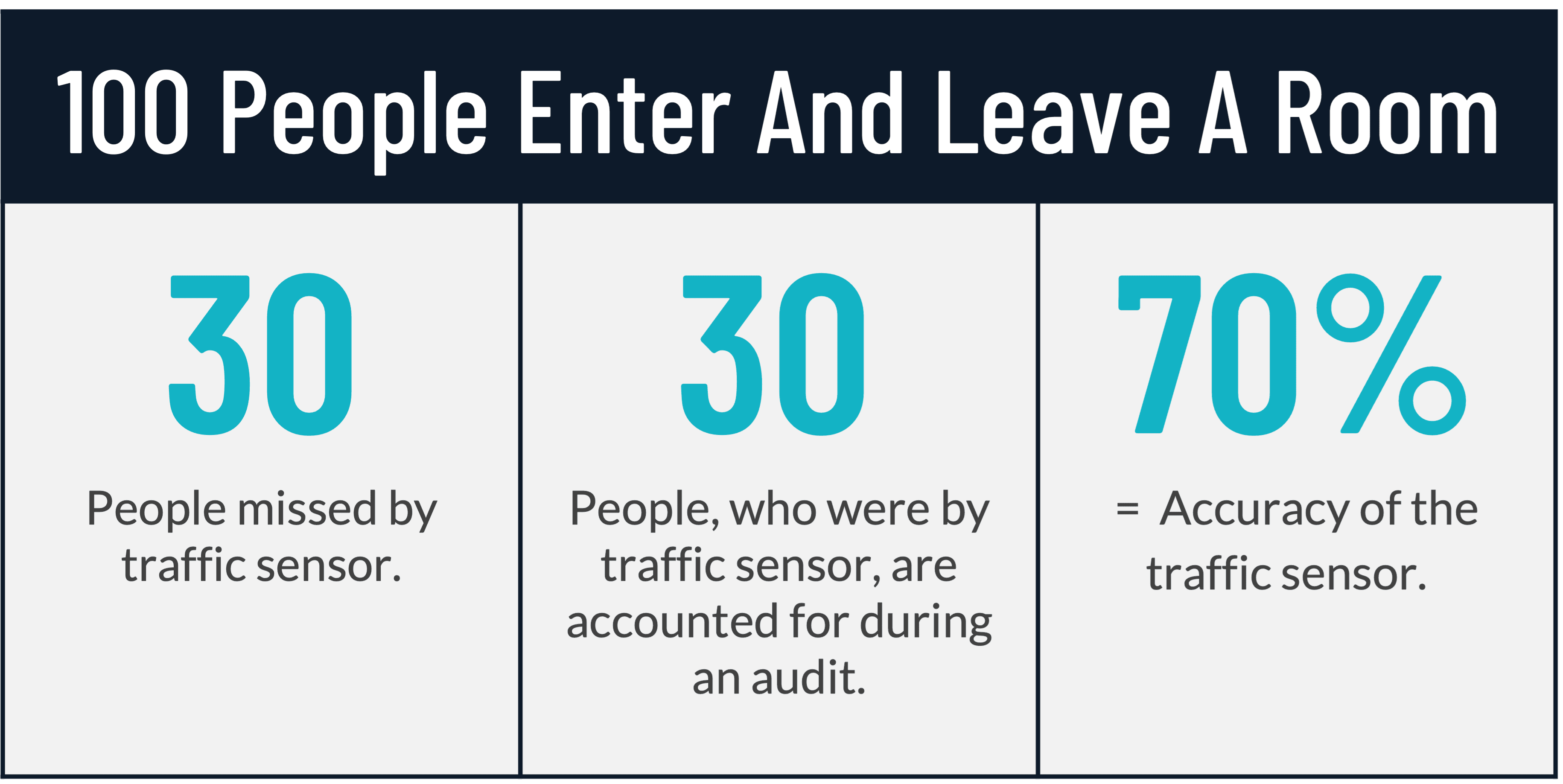
Auditing for people counting solutions should also include variance monitoring to determine the cause and degree of a difference between the baseline and actual performance. Assessing the extent of the deviation between the traffic in-and-out counts helps to guarantee the accuracy of sensors in the field. Your people counting solution should have established rules to determine when high variance occurs with its sensors, such as:
If the variance is higher than 40% on one day
If the variance is higher than 15% over 3 consecutive days
Be sure to check your provider’s service level agreement (SLA) to ensure that deviations are investigated within an acceptable timeframe and that the necessary alerts will be issued if, and when, these limits are breached.
It’s also important to ensure that audits employ defined methods and benchmarks to ensure a standardized approach to data validation. This can include defining the minimum number of events that should comprise a sample size for each audit or the maximum number of hours per audit. Varying the parameters of an audit runs the risk of producing varied results, ultimately impacting the accuracy of your results.
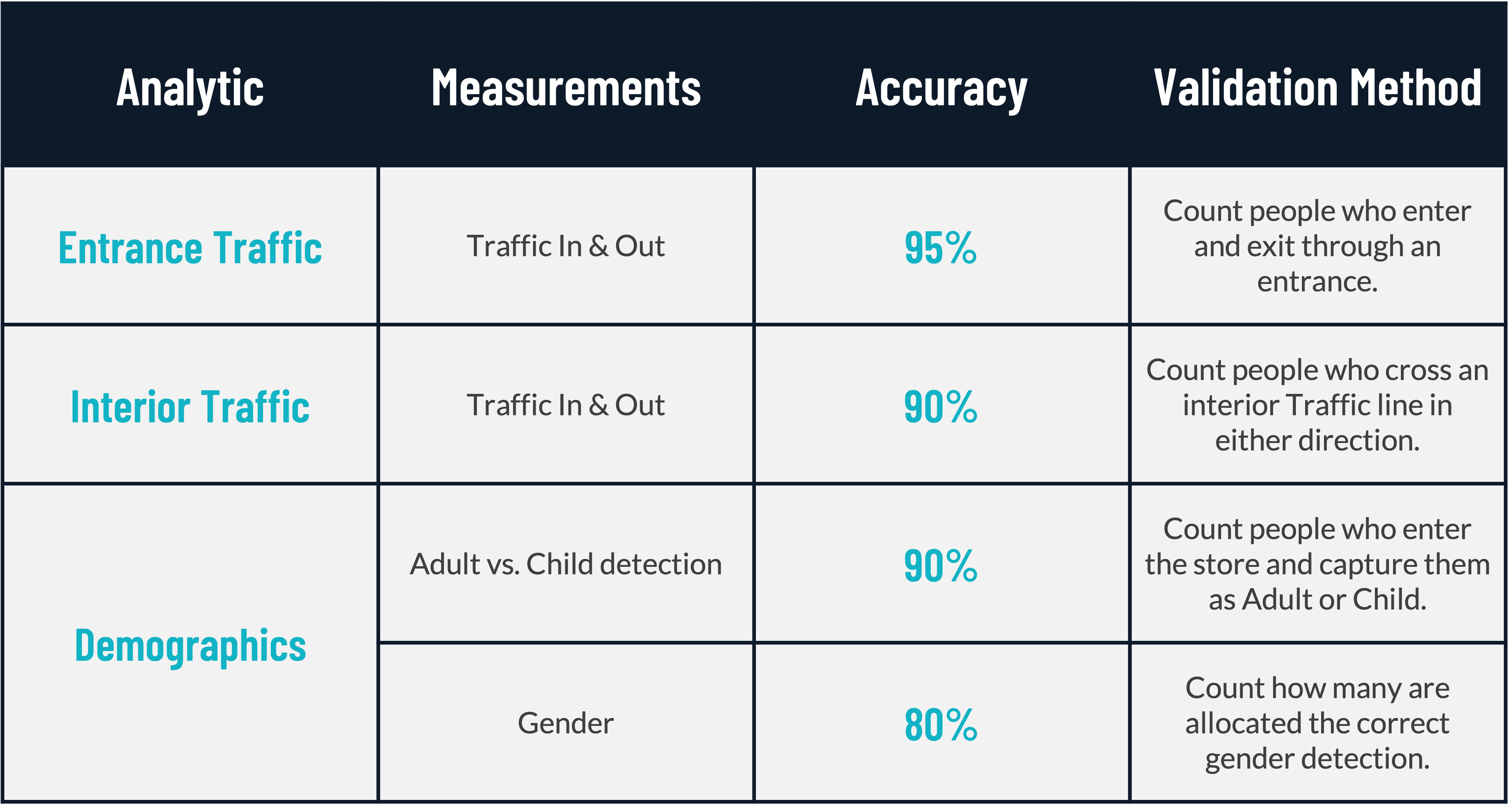
Finally, correctly configuring your traffic sensors will also play a part in ensuring their accuracy. This refers to the setup of the device to ensure it accurately captures the data you want. Newer-generation sensors generally work through a cloud-based interface that allows users to configure their devices. For example, by outlining the floor zone for a store, you can create a configurable area which defines where tracks will be detected by a sensor. If the outlined floorzone fails to sufficiently cover the area you want monitored, then the results will be inaccurate.
The Cost Of Inaccurate Data
Inaccurate conversion rates.
Increased labor costs to account for misrepresented numbers of shoppers.
Decline in the in-store customer experience as a result of understaffing.
Inflated, or conversely deflated, expectations about store layout.
A skewed perspective of the effectiveness of window and entrance displays.
Checklist Time
Does your people counter provide…
The latest generation of sensors?
Sensors with depth perception and sophisticated deep learning algorithms (AI)?
Demographics and activity recognition?
Verification of its accuracy levels through defined audits and variance monitoring?
Assistance with correctly configuring your sensor?
RetailNext Accuracy = Your ROI
RetailNext guarantees industry-leading accuracy of traffic data.
The Aurora sensor, which has the industry’s widest field of view, uses a patented artificial intelligence algorithm based on deep learning to anonymously detect people with incredible accuracy.
It detects people ten times each second to ensure maximum tracking accuracy and transmits analytic data to the RetailNext cloud each second.
The Aurora sensor includes built-in functionality to exclude employees and ensure accurate shopper traffic counts.
Every traffic sensor is audited for accuracy post-installation, by comparing manual counts from recorded video to the system counts, to guarantee a minimum threshold of 95 percent accuracy.
RetailNext conducts systemic and automatic health monitoring with immediate escalation for data anomalies.
Aurora sensors empower customers to easily verify the system’s accuracy independently by viewing live or recorded HD video that is available for up to 30 days.
Put To The Test
Following an extensive audit for a RetailNext customer in China, it was revealed that their previous people counters from a leading competitor provided inaccurate store traffic data as they were incorrectly counting employees walking out. RetailNext’s superior-tech excluded that activity, far lowering the store traffic counts and revealing:
the store traffic was significantly overstated
the conversion rate was grossly understated
labor hours were being squandered due to incorrect store traffic forecasts
LEARN MORE about RetailNext's FREE and EXCLUSIVE Aurora upgrade.
About the author:

Judith Subban, Marketing Communications Manager, RetailNext

